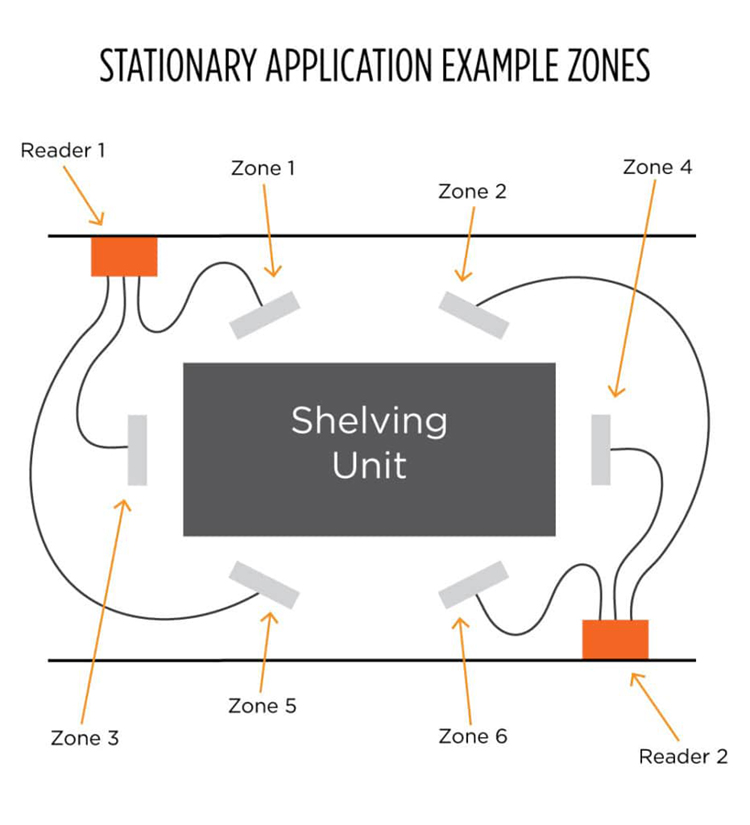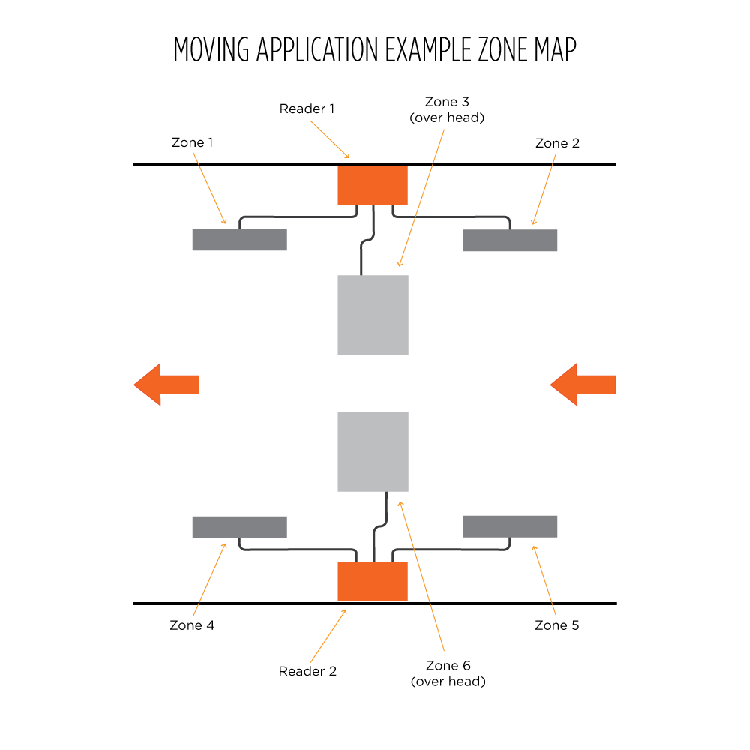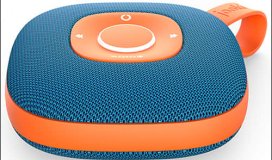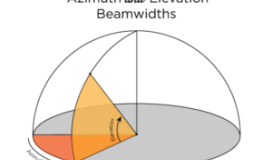Because UHF RFID has progressed so much since its inception, readers are able to read, on average, about 700 tags per second and interpret the data. This faster, highly efficient RFID tag read rate makes it possible for mass reading applications to emerge in several industries, most prominently in supply chain management.
A mass reading application is a simple way to describe an application that relies on reading a large volume of RFID tags, usually in a specific area within a given timespan. Applications most often fitting this description are applications within a warehouse or a high volume inventory of items within a confined space (e.g. a box).
While the capabilities exist within UHF RFID to make these applications successful, often the planning, purchasing, and set-up of equipment can be time consuming and technical in nature.
Phase I: Planning
It is necessary to start the planning stage with the specific application thoroughly vetted and a reasonable objective or known goal. Without a defined goal, the application could get off track with arbitrary ideas and end prematurely due to lack of funding or scope creep.
In mass reading applications, the goal is to read every single tag – meaning 100% (or near 100%) accuracy. Before purchasing any equipment, the first step is to map out the application area. Each area is going to be unique depending on the items tagged, the width, length, height of the area, and the number of tags in the space.
Once the overall application area has been assessed, it can then be broken down into mappable read zones in order to simplify the process and ensure that every angle is covered. Ensure that no part of a read zone is too wide or too deep so that no tags will be left out. The size of each read zone will determine the number of antennas required to cover it. Small zones, or ones requiring a proximity read, can likely be covered with a single antenna; larger zones may require two or more antennas to capture all tag reads. A few examples of mapped read zones are shown below as well as an image showing staggered zone antennas.

Example setup for Stationary RFID Mass Reading Application

Example setup for Moving RFID Mass Reading Application
Phase II: Purchasing
Mass reading cannot be accomplished without carefully selecting the right RFID hardware. Below are important points to consider when purchasing the major elements of an RFID system for mass reading.
Antennas
Determining which RFID antennas to use, as well as testing them, will likely be the most time consuming part of the RFID system setup.
Readers
The best RFID readers for this type of application are fixed, high-performance readers like the Impinj R420, ThingMagic M6, and Alien F800 – all considered workhorses in the RFID industry.
Tags
The choice of which RFID tag to use will be affected by the material and shape of the tagged item.
Phase III: Testing
Before testing, it is difficult to predict exactly how any RFID application will perform. Thorough testing is the key to every RFID application because so many different factors come into play, such as environment and RF-unfriendly materials, that may not be anticipated in the planning phase.
What to test? Testing is not just watching and waiting for results; testing should be performed within every part of your system. Below are a few examples of key system aspects you can analyze using trial and error in order to find the best possible results.
Antenna Arrangement – Moving antennas around and adjusting their heights and angles is the best way to determine the ideal antenna set-up. The planning stage establishes a starting point for the antennas, but incremental adjustments in the testing phase will help finalize the set-up.
Reader Power – Adjusting a reader’s transmit power is a great tool in the testing arsenal. In many cases, using the maximum transmit power is not necessarily the best setting. The recommended testing method is to start at the minimum transmit power and increment up by 1 dB, and study the results at each point. Obtaining 100% (or near 100%) read rates using the least amount of power is the goal; doing so will minimize stray (i.e. unintended) tag reads and keep the necessary RF energy to a minimum, which will also create less interference in applications using multiple RFID readers.
Tag SOAP – Tag SOAP is a critical element to consider throughout the entire process because changing the size, orientation, angle, or placement of a tag, even slightly, could change the ability to achieve 99% to 100% read rates. If test results are less than ideal, try moving the tags around in different placements on the tagged item or in different orientations and angles. Also, testing a variety of tags (sizes and attachment methods) is also recommended.



